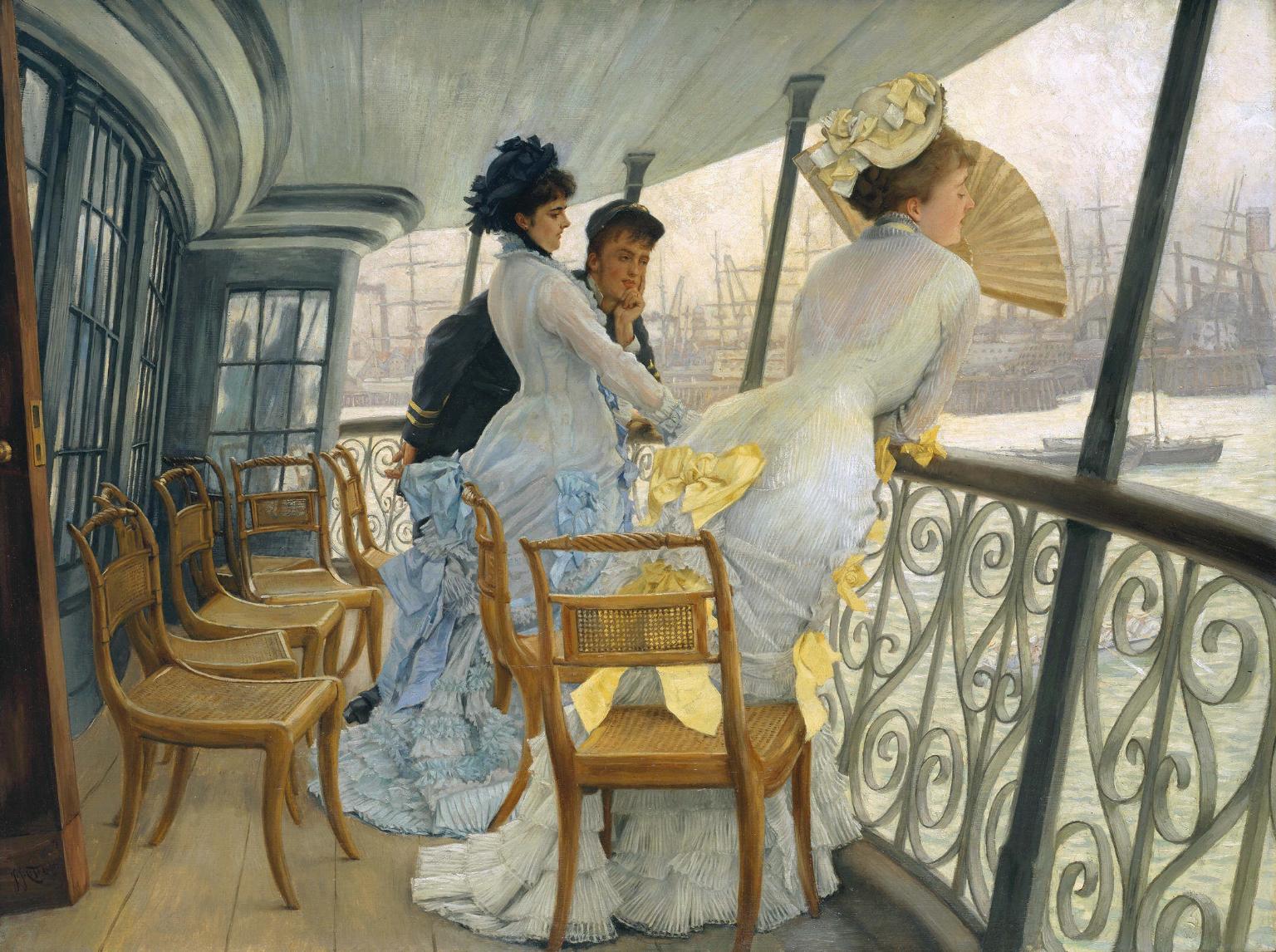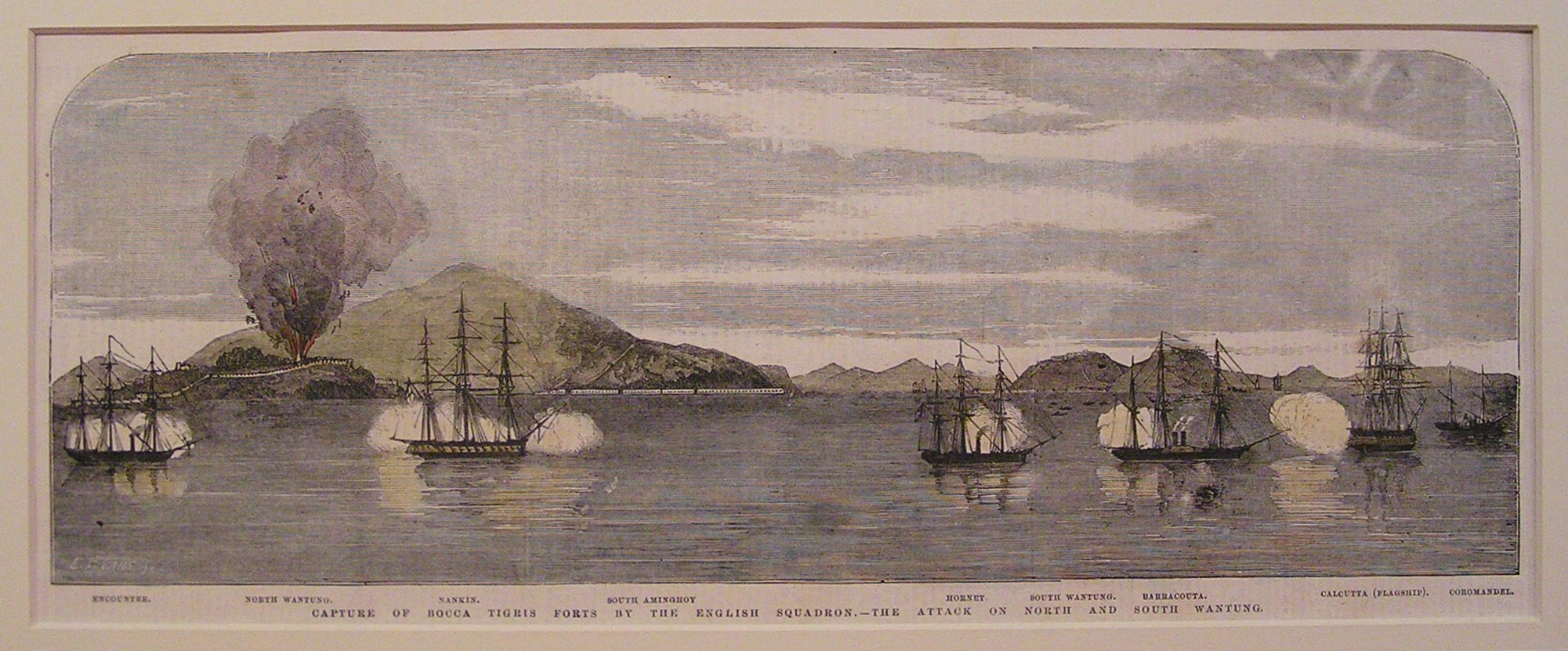|
HMS Hornet (1854)
HMS ''Hornet'' was a 17-gun wooden screw sloop of the of the Royal Navy, launched in 1854 and broken up in 1868. Construction Originally ordered in April 1847 as a "Screw Schooner", she was suspended in August 1847 and re-ordered on 1 November 1850 to the same design as HMS ''Cruizer''. The wooden sloops of the ''Cruizer'' class were designed under the direction of Lord John Hay, and after his "Committee of Reference" was disbanded, their construction was supervised by the new Surveyor of the Navy, Sir Baldwin Walker. ''Hornet'' was laid down at the Royal Dockyard, Deptford in June 1851. Her two-cylinder horizontal single-expansion steam engine, which was supplied by James Watt & Company at a cost of £5,450, generated an indicated horsepower of ; driving a single screw, this gave a maximum speed of . The class was given a barque-rig sail plan. Armament All the ships of the class were provided with one 32-pounder (56 cwt) long gun on a pivot mount and sixteen 32-pounde ... [...More Info...] [...Related Items...] OR: [Wikipedia] [Google] [Baidu] |
HMS Cruizer (1854)
Eleven ships of the Royal Navy have borne the name HMS ''Cruizer'' or HMS ''Cruiser'': * was a 24-gun sixth rate, previously the French ship ''De Meric''. She was captured in 1705 by HMS Tryton (1702), HMS ''Tryton'' and was wrecked in 1708. * was a 14-gun sloop-of-war, sloop. She was previously named ''Unity'', before being purchased in 1709. She was sold in 1712. * was an 8-gun sloop captured in 1721 and foundered in 1724. * was an 8-gun sloop launched in 1721 and broken up in 1731. * was a 14-gun sloop launched in 1732 and broken up in 1744. * was an 8-gun sloop launched in 1752 and burnt in 1776. * was a 14-gun cutter (ship), cutter purchased in 1780 and lost in 1792. * was the prototype of the 18-gun brig sloops, to which design 110 vessels were ordered; the prototype was launched in 1797 and sold in 1819. * was a launched in 1828, converted to a brig in 1831, back to a ship in 1840 and sold at Bombay in 1849. * was a wooden screw sloop launched in 1852. She w ... [...More Info...] [...Related Items...] OR: [Wikipedia] [Google] [Baidu] |
HMS Bittern (1840)
Seven ships of the Royal Navy have borne the name HMS ''Bittern'', after the bird, the bittern: * was an 18-gun sloop launched in 1796 and sold in 1833. * was a 12-gun brig launched in 1840 and sold in 1860. *HMS ''Bittern'' (1861) was to have been a wood screw sloop A screw sloop is a propeller-driven sloop-of-war. In the 19th century, during the introduction of the steam engine, ships driven by propellers were differentiated from those driven by paddle-wheels by referring to the ship's ''screws'' (propelle .... She was ordered in 1861, but construction was cancelled in 1864. * was a wood screw gunvessel launched in 1869 and sold in 1887. * was an launched in 1897 and sunk in a collision in 1918. *HMS ''Bittern'' was to have been a sloop, but she was renamed before her launch. * was a ''Bittern''-class sloop, launched in 1937 and sunk in 1940. {{DEFAULTSORT:Bittern, Hms Royal Navy ship names ... [...More Info...] [...Related Items...] OR: [Wikipedia] [Google] [Baidu] |
William Kennedy (Royal Navy Officer)
Admiral Sir William Robert Kennedy (4 March 1838 – 9 October 1916) was a Royal Navy officer who served as Commander-in-Chief, The Nore. Biography Born in Naples, Italy where his father John Kennedy was the British chargé d'affaires, Kennedy joined the Royal Navy in 1851 and served with the Naval Brigade during the Crimean War. He was present at the bombardment of Canton in 1856, at the Battle of Fatshan Creek in 1857 and at the attack on the Peiho Forts in 1858 during the Second Opium War. As a lieutenant he next was appointed to the sloop Wasp and on the journey to Cape of Good Hope he jumped overboard to rescue a man that had fallen in; he was awarded a silver medal by the Royal Humane Society. He later sailed on the Narcissus and Victoria, the mediterranean flagship. Promoted to commander in 1867, he commanded the Vestal on the North American station and then the Reindeer in the Pacific. From 1879 to 1891 he commanded the Druid and was senior officer on the Newfoundland ... [...More Info...] [...Related Items...] OR: [Wikipedia] [Google] [Baidu] |
Bogue Forts
The Humen, also Bocca Tigris or Bogue, is a narrow strait in the Pearl River Delta that separates Shiziyang in the north and Lingdingyang in the south near Humen Town in China's Guangdong Province. It is the site of the Pearl River's discharge into the South China Sea. It contains the Port of Humen at Humen Town. The strait is formed by the islands of Chuenpi (, p ''Chuanbi'') and Anunghoy (, p ''Aniangxie''; also called , p ''Weiyuan'') on the eastern side, and Taikoktow (大角头, p ''Dajiaotou'') on the western side. Since 1997, the strait has been traversed by the Humen Pearl River Bridge. Bocca Tigris was the entry to China's only trading city, Kanton. Name The Latinate ' is derived from the Portuguese ', which is a calque of the Chinese and Cantonese name , literally meaning "The Tiger Gate".Taylor 1898, p. 70 The name ''Bogue'' is also a corruption of the Portuguese ''Boca''. The name comes from the impression given by Tiger Island, situated ab ... [...More Info...] [...Related Items...] OR: [Wikipedia] [Google] [Baidu] |
HMS Coromandel (1856)
Four ships of the Royal Navy have borne the name HMS ''Coromandel'', after the Coromandel Coast of India: * was a 56-gun fourth rate, previously the East Indiaman ''Winterton''. She was purchased on the stocks in 1795, used as a storeship from 1800, was converted to a convalescent ship in 1807 for Jamaica, and was sold there in 1813. She returned to Britain around 1847 and was wrecked at Yarmouth in 1856.Howard, A.J. "Bert" (2006) ''The Coromandel Files''. - Accessed 24 April 2013. * HMS ''Coromandel'' was the East Indiaman ''Cuvera'', which the Admiralty bought in 1804 and converted to the 56-gun fourth-rate . She was rebuilt as a 20-gun storeship in 1806 and renamed HMS ''Coromandel'' in 1815. She transported convicts to Australia in 1819. From 1828 to 1853, when she was broken up, she served as a prison hulk in Bermuda. * was a wooden paddle dispatch vessel of the Royal Navy. She was built in 1853 for the P&O company as the passenger and cargo steamer ''Tartar''. The Navy ... [...More Info...] [...Related Items...] OR: [Wikipedia] [Google] [Baidu] |
HMS Barracouta (1851)
HMS ''Barracouta'' was the last paddle sloop built for the Royal Navy. She was built at Pembroke Dockyard and launched in 1851. She served in the Pacific theatre of the Crimean War, in the Second Opium War and in the Anglo-Ashanti wars. She paid off for the last time in 1877 and was broken up in 1881. Design and construction ''Barracouta'' was designed as a second-class paddle sloop and ordered from Pembroke Dockyard on 25 April 1847. She was armed with two 10-inch (84 cwt)"cwt", or "hundredweight" refers to the weight of the gun itself. pivot guns and four 32-pounder"32-pounder" refers to the weight of the shot fired. (25 cwt) guns. Her two-cylinder direct-acting steam engine was provided by Miller, Ravenhill & Salkeld at a cost of £18,228, and produced 300 nominal horsepower, or .Winfield (2004), p.162. Her armament was changed in 1856, when one of the 10-inch guns was replaced by a 68-pounder (95 cwt) gun, and the 25 cwt 32-pounders were replaced with 42 cwt versions. In 1 ... [...More Info...] [...Related Items...] OR: [Wikipedia] [Google] [Baidu] |
HMS Encounter (1846)
HMS ''Encounter'' was ordered as a First-Class Sloop with screw propulsion on 5 February 1845 to be built at Pembroke, in accordance with the design developed by John Fincham, Master Shipwright at Portsmouth. Her armament was to consist of 8 guns (2 x 85 cwt, 4 x 65 cwt and 2 x 25 cwt). She was to have a more powerful steam engine rated at 360 nominal horsepower. In 1848 she would be altered abaft and lengthened at Deptford prior to completion. A second vessel (''Harrier'') was ordered on 26 March 1846 but after her keel was laid at Pembroke Dockyard, her construction was suspended on 9 September 1846 then cancelled five years later, on 4 April 1851. ''Encounter'' had her armament radically altered in 1850 and she was broken up at Devonport in 1866. ''Encounter'' was the third named vessel since its introduction for a discovery vessel in service in 1616.Colledge ''Harrier'' was the fourth named ship since the name was introduced for a ‘Cruizer’ class fir built 18-gun brig ... [...More Info...] [...Related Items...] OR: [Wikipedia] [Google] [Baidu] |
HMS Calcutta (1831)
HMS ''Calcutta'' was an 84-gun second-rate ship-of-the-line of the Royal Navy, built in teak to a draught by Sir Robert Seppings and launched on 14 March 1831 in Bombay. She was the only ship ever built to her draught. She carried her complement of smooth-bore, muzzle-loading guns on two gundecks. Her complement was 720 men (38 officers, 69 petty officers, 403 seamen, 60 boys and 150 marines).Diaries of William King-Hall . Retrieved 6 November 2008. History  In 1855 the ship had been in reserve, but was recommission ...
In 1855 the ship had been in reserve, but was recommission ...
[...More Info...] [...Related Items...] OR: [Wikipedia] [Google] [Baidu] |
Boats Of HMS Hornet Attacking A Pirate Fleet, 1857
A boat is a watercraft of a large range of types and sizes, but generally smaller than a ship, which is distinguished by its larger size, shape, cargo or passenger capacity, or its ability to carry boats. Small boats are typically found on inland waterways such as rivers and lakes, or in protected coastal areas. However, some boats, such as the whaleboat, were intended for use in an offshore environment. In modern naval terms, a boat is a vessel small enough to be carried aboard a ship. Boats vary in proportion and construction methods with their intended purpose, available materials, or local traditions. Canoes have been used since prehistoric times and remain in use throughout the world for transportation, fishing, and sport. Fishing boats vary widely in style partly to match local conditions. Pleasure craft used in recreational boating include ski boats, pontoon boats, and sailboats. House boats may be used for vacationing or long-term residence. Lighters are used to convey ... [...More Info...] [...Related Items...] OR: [Wikipedia] [Google] [Baidu] |
Charles Codrington Forsyth
Charles is a masculine given name predominantly found in English and French speaking countries. It is from the French form ''Charles'' of the Proto-Germanic name (in runic alphabet) or ''*karilaz'' (in Latin alphabet), whose meaning was "free man". The Old English descendant of this word was '' Ċearl'' or ''Ċeorl'', as the name of King Cearl of Mercia, that disappeared after the Norman conquest of England. The name was notably borne by Charlemagne (Charles the Great), and was at the time Latinized as ''Karolus'' (as in ''Vita Karoli Magni''), later also as '' Carolus''. Some Germanic languages, for example Dutch and German, have retained the word in two separate senses. In the particular case of Dutch, ''Karel'' refers to the given name, whereas the noun ''kerel'' means "a bloke, fellow, man". Etymology The name's etymology is a Common Germanic noun ''*karilaz'' meaning "free man", which survives in English as churl (< Old English ''ċeorl''), which developed its depre ... [...More Info...] [...Related Items...] OR: [Wikipedia] [Google] [Baidu] |


.jpg)